Attic find of the year has to be awarded to RoSPA, who went into their warehouse last year and discovered 700 old posters. I dream of doing something like that. Especially if it produces posters like this one.
This is by Leonard Cusden from 1951, and it’s the original artwork, as is, it seems, much of what was discovered in the back of the warehouse.
Not everything is of quite such high quality graphically, although this Bruce Angrave from the 1940s is rather fine.
While this poster by Digby Willis is just rather fantastic quite regardless of the style.
I may be needing a copy of that when small Crownfolio hits the teenage years.
Many of the rest, like these two by Roland Davies and F Blake respectively, are more from the Ladybird books or Woman magazine school of design than high graphics.
While this one, by Gus from 1963, is just plain odd, mostly because it makes me feel very sorry for the hen.
Maybe it’s the gender politics making me uneasy.
Overall, though, the impression that these posters give is that RoSPA’s quality control systems, so thorough during the Second World War and in the years after, disappeared later on.
And they really did have a quality control system; their Publicity Committee was staffed by, amongst others, Tom Eckersley and Ashley Havinden, whose keen eyes really did let little dross through. Here are the couple of posters that we own from this period, by G R Morris and Eckersley himself.
RoSPA are a really interesting organisation: there is a lot more to say about their posters and I’m rather surprised to discover that I’ve not written anything about them properly on the blog yet. This is even more surprising given that their wartime posters get a mention in the book (did I mention the book? that I have written one? and that you can order it from Amazonalready?). But most of what we tend to come across are the later posters, and these in the main would have caused the sensitive disposition of Ashley Havinden some pain I think.
More posted here if you are a glutton for punishment. To make up for that, I’ll go through some archives and dig out a few gems one of these days, because there are some great ones to be seen, most notably on VADS. This one, which I’d never seen before now, is by Theyre Lee Elliott.
However, I am a mere amateur in this field, because if you really want to know about RoSPA, the person you need to be reading is Paul Rennie,who wrote his PhD thesis on their wartime poster output, and has condensed this into a couple of articles which you can find here and here.
You can even – such are the wonders of the internet – download his entire thesis from the British Library if you like. I’d recommend it, it’s a good read.
If you’d rather form your own opinions about the posters, RoSPA are exhibiting 40 of their finds in Birmingham next week. Two words of warning, though. Firstly the exhibition is only on for three days. But perhaps more importantly, RoSPA are mostly exhibiting reproductions rather than the originals themselves. That said, it would probably still be pretty interesting, so if anyone goes, can you let me know all about it please?
Finally, from one Eckersley to another. I mentioned this showcard last week when it appeared on eBay.
The starting price was 99p; it finally went for £317. I know it’s easier to display than a poster but even so, I’m still astonished. Thoughts and explanations – along with corresponding valuations of the poster itself – in the comments box please.
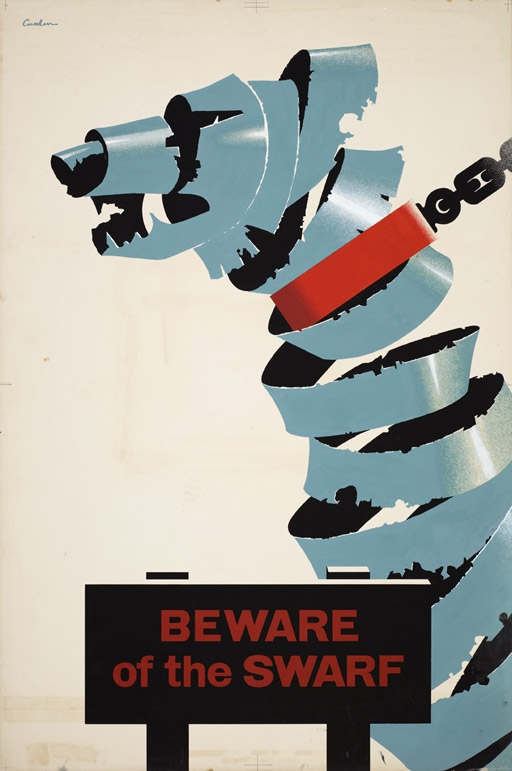
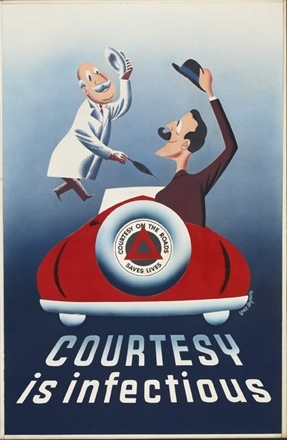
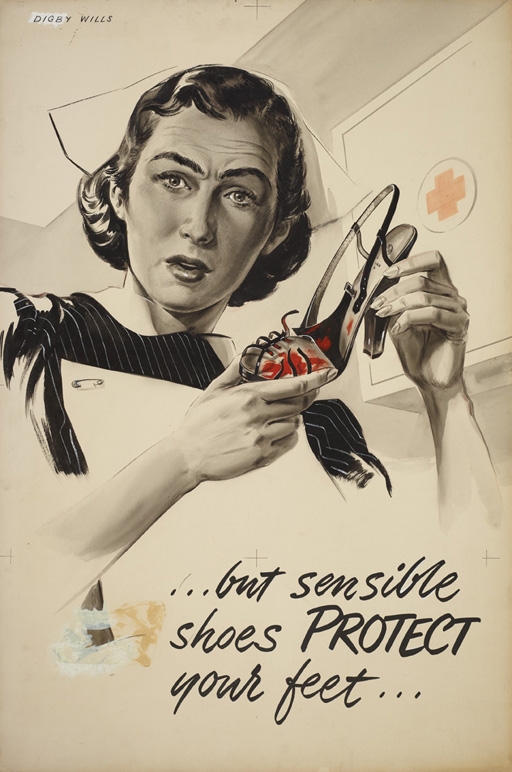
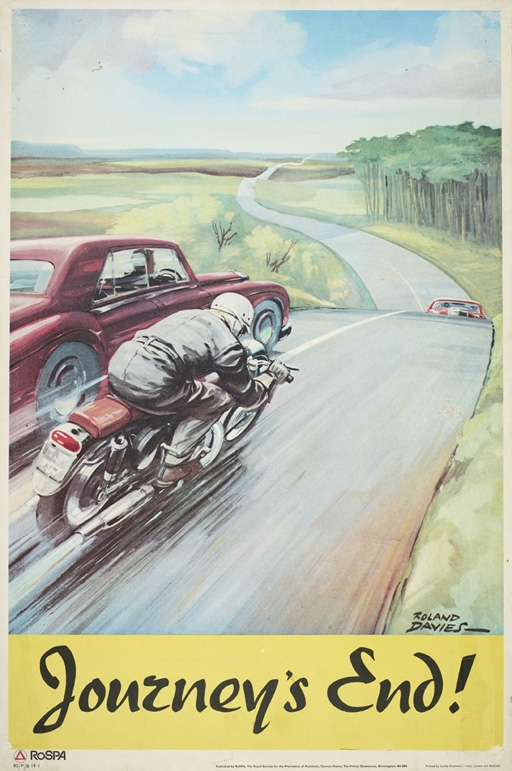
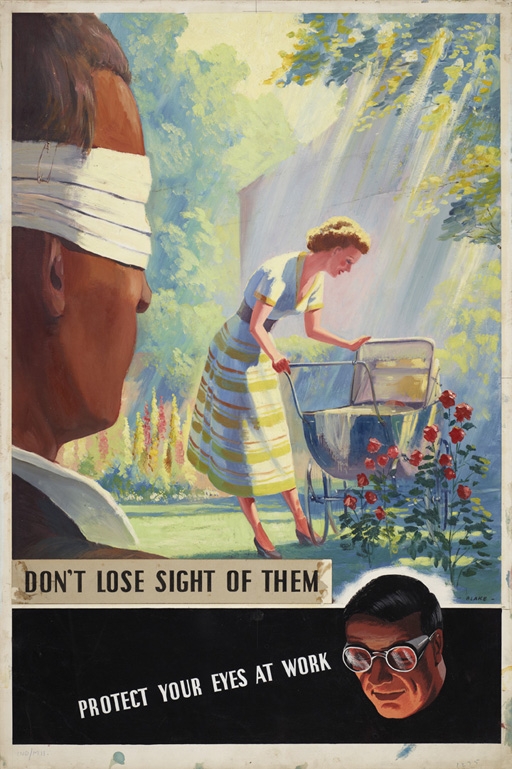
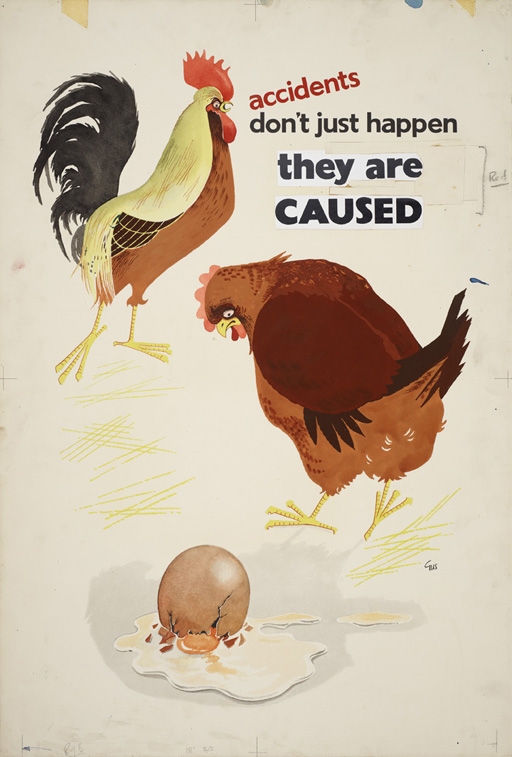
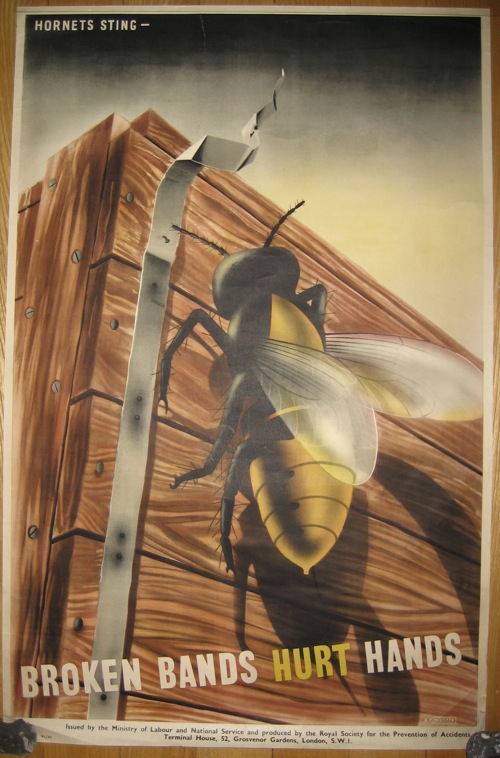
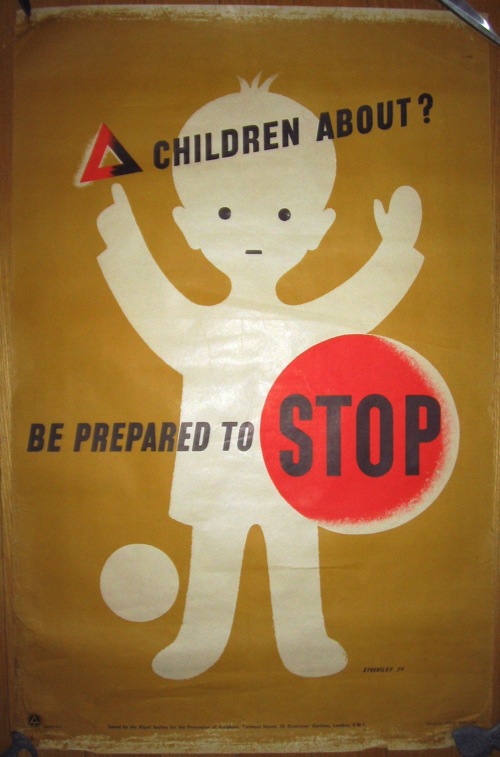
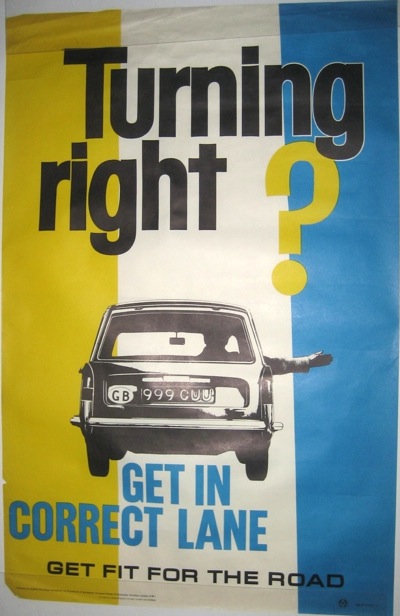
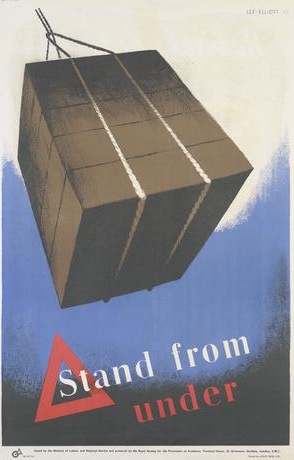
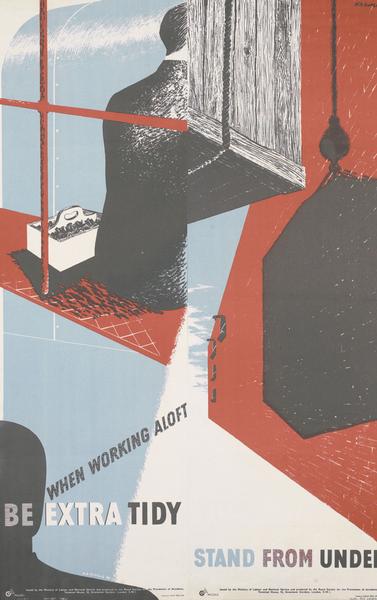
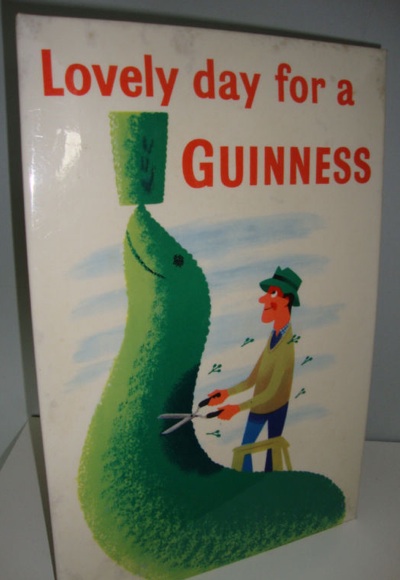
I think the main reason the Guinness piece sold for so much was due to the modern-day brand recognition. Being such a popular product, people are naturally inclined to get a little piece of history for display.
There is a certain value to owning an older piece of a modern item. It reinforces the classic notion of “I liked X before it was popular”. For a single person it might be a bit of a stretch to pay so much, though I could easily see this in a frame in someone’s house. But when you think about this piece hanging on the wall in a pub that is doing well for itself, the value is easily justified.
This is of course not to mention the simple fact that this piece is gorgeous.
I too was a tad perplexed by this one. Guinness poster prices from what I have seen are all over the place (I’ve purchased a couple of Guinness classics recently that added together would not buy the showcard) . Perhaps the price was influenced by an intake of the black stuff itself?! I do however wonder whether work by Eckersley is the factor here (and perhaps the brand)…where his work becomes available it seems to go quickly and at a premium, hence my comment the other month about wanting to see his work appear more in UK ‘proper’ auctions – now that would be interesting…
Perplexity still reigns here too.
James, I agree with everything you say, but this price is still well out of the league of the price premium that any normal Guinness brand recognition usually commands.
Eckersley probably is part of the added value here (something which does rather please me as we do have the poster version of this). But I also wonder if a showcard is just an easier thing to own: you don’t have to conserve it or frame it, just prop it up on the shelves and Bob’s your uncle. Certainly it does serve to endear me to the two British Railways showcards that we have on our shelves.
As for seeing Eckersley at ‘proper auctions’, I agree. Once again, Christies change of approach means that we can’t really tell. Before they set an £800 min price limit, his stuff used to come up all the time, now it’s much harder to pin values to them. Although I have noticed that his later work is now going for a lot more on eBay than we used to pick them up for.